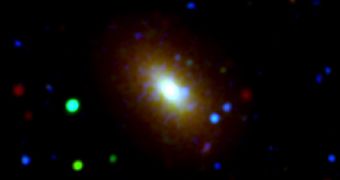Evidence corroborated by two different NASA missions indicates that the first bursts of stellar formation occurred at the cores of galaxies, and only later spread towards the galactic halos.
The new study indicates that both the inner and outer portions of galaxies can be used to derive a historical record for each of these formations, similarly to how tree rings are used to determine the age of trees.
For this study, experts at the Virginia Institute of Technology (Virginia Tech) and the California Institute of Technology (Caltech) used data from the NASA Wide-field Infrared Survey Explorer (WISE) and Galaxy Evolution Explorer (GALEX) telescopes.
The team was able to develop a method of extending the study of tree rings – where the rings start at a tree's dense cores and then move gradually outwards – to massive galaxies billions of light-years away. This approach allowed them to reconfirm the “inside-out” theory of galaxy growth.
One of the most important findings in the study was that stellar formations burst in galactic cores predate those in the halo, or fringes, by 1 to 2 billion years. Fuel for stars formed outside these periods may have come from galactic mergers, experts at the Jet Propulsion Laboratory (JPL) argue.
“Initially, a rapid star-forming period formed the mass at the center of these galaxies, followed later by a star-forming phase in the outer regions. Eventually, the galaxies stop making stars and become quiescent,” explains Virginia Tech expert Sara Petty, who was also the lead author of the study.
Details of the work appear in the October 2013 issue of the respected Astronomical Journal.
In the same study, the team also determined the reason why very old, red galaxies display such a surprisingly high amount of ultraviolet radiations – a type of light more characteristic to younger stars. The data suggests that the unexplained UV radiations may be produced by very old, very hot stars in the late phases of their lives.
The joint use of GALEX (sensitive to UV ranges) and WISE (sensitive to infrared light) made this study possible. “The synergy between GALEX and WISE produces a very sensitive measurement of where the hot, older stars reside in these red-and-dead galaxies,” says Caltech expert Don Neill.
“This allows us to map the progress of star formation within each galaxy,” concludes Neill, who was also a co-author of the paper. The full document is available for a thorough read online.

 14 DAY TRIAL //
14 DAY TRIAL //